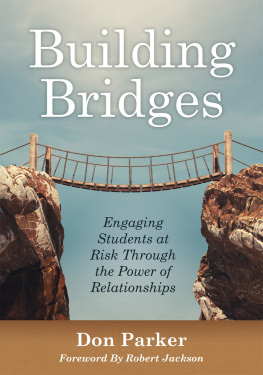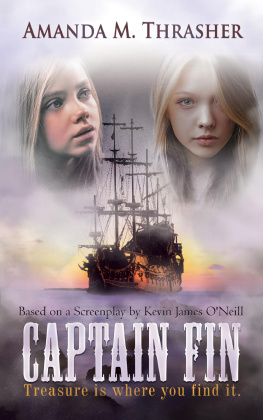Classroom Management Training Handbook
This Classroom Management Training Handbook: Cued to Preventing Discipline Problems, K12 is a workbook for K12 teachers and is meant to be used in combination with Preventing Discipline Problems, K12: Cued to Classroom Management Training Handbook, Fourth Edition. The Handbook follows the same structure as Preventing Discipline Problems, K12. Preventing Discipline Problems, K12 includes references to the Handbook, signaling the reader to consult information in this Handbook.
Classroom Management Training Handbook
Cued to Preventing Discipline Problems, K12
Fourth Edition
Howard Seeman
Rowman & Littlefield
Lanham Boulder New York London
Published by Rowman & Littlefield
A wholly owned subsidiary of The Rowman & Littlefield Publishing Group, Inc.
4501 Forbes Boulevard, Suite 200, Lanham, Maryland 20706
www.rowman.com
16 Carlisle Street, London W1D 3BT, United Kingdom
Copyright 2014 by Howard Seeman
All rights reserved. No part of this book may be reproduced in any form or by any electronic or mechanical means, including information storage and retrieval systems, without written permission from the publisher, except by a reviewer who may quote passages in a review.
British Library Cataloguing in Publication Information Available
Library of Congress Cataloging-in-Publication Data
Seeman, Howard.
Classroom management training handbook / Howard Seeman.
pages cm
Includes index.
ISBN 978-1-61048-387-2 (cloth : alk. paper) ISBN 978-1-61048-388-9 (pbk. : alk. paper) ISBN 978-1-61048-389-6 (electronic) 1. Classroom managementUnited StatesHandbooks, manuals, etc. 2. School disciplineUnited States. 3. Problem childrenBehavior modification. I. Title.
LB3013.S43 2014
371.102'4dc23 2014014179
 The paper used in this publication meets the minimum requirements of American National Standard for Information SciencesPermanence of Paper for Printed Library Materials, ANSI/NISO Z39.48-1992.
The paper used in this publication meets the minimum requirements of American National Standard for Information SciencesPermanence of Paper for Printed Library Materials, ANSI/NISO Z39.48-1992.
Printed in the United States of America
Contents
For Chapter 1
Using This Book as a Handbook
Training Exercises
Decide what your work responsibility is by looking down all the sections of Chapter 1 in the textbook.
Choose the section of the chapter of the textbook that best fits your work responsibilities.
Before you read the road map of how to proceed for your job/work in each section, list the areas and concerns that bother you the most in your job.
Follow the road map in the section that fits your job of how to read and use the textbook for your work responsibilities.
Checklist
Look at the areas and concerns that you listed in number 3 above, and check off in the Table of Contents of the textbook the areas relevant to your work/concerns. If you do not find your concern there, see the Index of the textbook.
For Chapter 2
Why Many Attempts Have Been Inadequate
Teachers Share Their Growing Pains
Below are comments from teachers after they have read this chapter in the textbook. Some of these reactions and concerns I have paraphrased or edited to protect confidentiality; I have also eliminated any ways to identify the person who shared these remarks. But these are honest reactions of teachers as they learn the concepts in the text. Thus, you will see you are not alone with these problems. MY COMMENTS to their comments ARE IN CAPS.
Which points in Chapter 2 seem particularly relevant to you, or are ones that you would deem very important?
That 50 strategies in 1977 all would be solved with proper lesson plans I find ludicrous. I agree that teachers get little help regarding the key source of discipline problems. What I found relevant to me and that I find intriguing is the teachers personality.... My college did not prepare me well for being in the classroom, just philosophies that arent meant to teach how to interact with students. YES, I AGREE! SEE MY ARTICLE: http://classroommanagementonline.com/what.html
Highlights of what I find important: Teacher education programs do not have courses devoted to handling/preventing discipline problems; major source of discipline problems is the complex interaction between student and teacher; Prevention: educators spend much time to control disruptive behavior. Instead, discover sources of discipline problems and prevent them; Crucial factorteachers personality; Many attempts to remedy the discipline problems are in the form of judgments (teachers and advisers may picture different things or have different personalities, thus making the suggestions incongruent for them); Emphasis must be on self-discipline and helping students make responsible decisions (Keating, Barbara, A guide to positive development); Effective classroom management: focus on the physical environment of the classroom, developing and teaching rules and routines, getting students cooperation; Behavior modification system of reward and punishment (according to some literature mentioned in this chapter) show little regard for the underlying emotions (if punishments are used, they have to be educationally appropriate and fair to child); extinguishing bad behavior without showing the right behavior teaches repression and anger.
Point 5Area of prevention; Point 6Teachers personality; Point 3Human interaction between teacher and studentas one of the possible sources of discipline problems. Punishment, if used, is to be educationally appropriate, fair to child.
Each person is different and handles his/her situation differently. Yes, this happens: the teacher giving advice feels like they are so intelligent and the other teacher feels inadequate. [YES] We each have our way of handling things, each of us differently. If it works for you, go for it. [YES] If it does not work, find your system. [YES] Yes, hard to change horses mid-stream with classes of children, as stated in Chapter 1, but one can talk with the class about these changes and why and follow through. Yes, for me, sometimes making the rules with the class helps. Then, everyone has ownership with the rules, not just me. YES, BUT SOMETIMES DOES NOT WORK WELL. SOMETIMES KIDS ARE NOT FAIR, OR IT TAKES TOO MUCH TIME TO DO THIS WITH THEM, AND YOU MUST FEEL CONGRUENT WITH THESE RULES THEY MAKE. SO NOT EASY TO DO THIS.
Yes, prevention is not always enough. Yes, it is important how the teacher plays a role within the classroom management style that fits best with their personality and needs. [YES]. Yes, advice and judgments make the adviser often feel better, but the advisee feel dumber reminded me of situations last year. [YES, ADVISERS LOVE TO ADVISE FROM THEIR OWN STYLE.] I was also a little disappointed about your comments about allowing students to take part in creating the expectations and allowing them to earn rewardscan be problematic.
Chpt. 2very interestingyes, teacher training programs do not ready people for the real thing and that is dealing with peopleI agree that the teachers personality is one of the most crucial factorsat my school we have all the same rules but may have different classroom proceduresbut all the rules and all the procedures in the world cant help if the kids sense the teacher is not sure of themselves, [YES] of their subject matter, or how to connect with themI have been a mentor teacher many times and this is good just in the fact the mentee has someone to go to that is not judgmental and can let loose with concerns/frustrations but as the book says what problem Mr. X is having in his class may not be that in Mr. Ysteachers need more training in dealing with human interaction than writing lesson plans [YES, YOU GOT IT. YOU MUST BE A GOOD MENTOR]it may be a killer of a lesson but if the teacher cant get it across.
Next page








 The paper used in this publication meets the minimum requirements of American National Standard for Information SciencesPermanence of Paper for Printed Library Materials, ANSI/NISO Z39.48-1992.
The paper used in this publication meets the minimum requirements of American National Standard for Information SciencesPermanence of Paper for Printed Library Materials, ANSI/NISO Z39.48-1992.